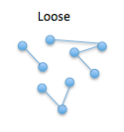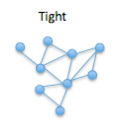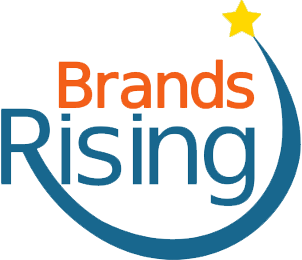Once you establish consensus about your agenda for embarking on a social employee program, you then need to get the lay of the land — to understand who influences the online conversations that your brand cares about.
First, identify sector-specific or topic-specific influencers for inclusion in your program. Generic metrics such as total followers, and proprietary influencer scores will not do the trick. You need to understand precisely who influences specific topics which impact your brand’s goals.
The best approach involves research to determine who influences online conversations, and you should conduct that research through two means: First, asking employees or partners. They probably already know who most of the important influencers are or will begin to understand them as your program evolves. They may also be members of Velvet Rope Communities (private members only), which would be relevant to your goals. Second, consider purchasing a report or commission research from an established organization that conducts influencer analysis.
If you take one lesson from this post, let it be this: Do not rely on automated scores that are publicly available. Instead, you must work with a team or person who is skilled at understanding how you define the topics that you want to assess, as well as identifying the people who truly influence any particular topic, as defined by you.
When you begin this exercise, you need to establish a common definition of “influencer” among your team. As Duncan Watts said:
Everyone has their own definition of an “influencer” and they’re rarely the same definition: sometimes the term is used to refer to “ordinary” individuals whose influence propagates via direct interpersonal networks. Other times it is used to refer to celebrities like Oprah Winfrey, whose influence propagates via the mass media. And at other times still it is used to refer to intermediate cases such as bloggers, columnists, experts, authors, and other semi-public figures whose influence is some mixture of mass and personal influence.
Source: “Why Social Influence Matters to Business”. Inc.com. Dubois, Lou. March 31, 2011.
Then, prioritize those influencers for treatment. For example, you might wish to establish new relationships with some of the influencers, but you will likely not have the resources to pursue all of them at the same time. Or, you might find some of them more difficult to reach, due to their relative fame, busy jobs or because they’re members of velvet rope communities. So, you need to prioritize.
As Neil Beam of MotiveQuest says,
You have to rank influencers differently, depending on your goals. If you’re focused on customer service, you want to look for people who are knowledgeable about your products, constructive in their interactions, and have posted solutions of some type in the past.
Source: Interview with Neil Beam, Director of Client Relations at MotiveQuest. January 2, 2013.
If your goals are more focused on selling, you need to understand the extent to which people in your target audience advocate for brands or products. For one consumer brand, the team at MotiveQuest found that 78% of people in social media who advocate for a brand do so only once per year. 3% advocate twice per year, and only 3% advocate 3 or more times per year.
Those proportions may be different in your industry, and even within your audience, so you need to understand how your audience advocates in your industry. Then, you need to ensure that your influencer program is structured accordingly.
You might also categorize influencers according to where they live or work in the world. This is especially useful for inviting influencers to in-person events, such as conferences or product launches. It can also help to plan tactics that support relationship development in person, such as lunches, dinners or events that your brand sponsors.
As you work through your prioritization, seek to understand the relationships between influencers themselves. The figure below shows two extreme types of influencer networks, and most lie somewhere in between, but understanding the two can help you determine how to target influencers for relationship development.

• Each influencer focuses on a niche sub-topic or region
• Low likelihood that content from one influencer will be passed to other influencers
• Invest in relationships with each cluster

• Most of the people who influence the topic know each other
• Influencers tend to influence or borrow from each other
• Focus on establishing very strong ties with fewer leading influencers, to subsequently influence the entire network
The right influencers for your brand may come from either tight or loose networks. But depending on who you choose , you’ll need to implement distinct strategies to get the results you want.
I explain how to reach out to influencers and manage your relationship, requests, and communication with them in Chapter 5 of my book, The Most Powerful Brand on Earth. This is one step you won’t want to get wrong.
